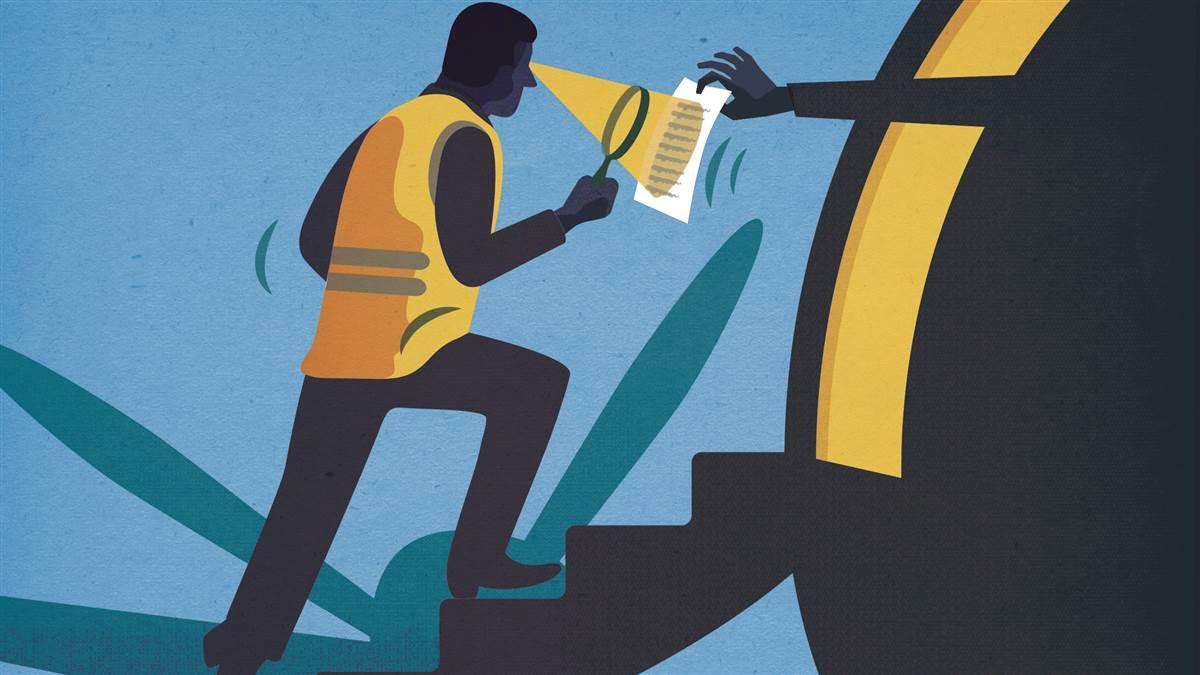My very first ramp check
What the FAA really cares about now
By J. Mac McClellan
In 50 years of flying and well more than 12,000 flight hours I have never been ramp checked by the FAA. That is, until just a couple months ago.

My co-captain and I were waiting for our passengers at our home FBO. The Beechcraft King Air 350i was pulled up on the ramp out front and ready to go. This was a bit of an unusual passenger load for us. The company I fly for was transferring a couple employees to another location. Our mission that day was to fly two of the spouses and five children of the employees to scout out the proposed new location.
Just as our passenger group of moms and ’tweens was arriving with all their gear, the FAA principal operations inspector (POI) from our local FSDO walked in the door of the FBO. He was there for a routine inspection of the small charter operation based at the FBO, but he quickly eyed us and our passengers.
I picked up an armful of luggage and headed out to the airplane. The POI followed me and once on the ramp said he was going to conduct a ramp check on us. I was surprised.
My co-captain was right behind me with more luggage, and the POI began his questioning. Not about the airplane or its airworthiness status. Not about our ratings and training records. No. It was a long series of questions about who we worked for. That led to more inquiries about who owns the airplane. And who those passengers were.
He eventually got around to asking to see our certificates. They drew a brief glance. He wrote down something quickly. Maybe our certificate numbers. Then on to the real reason for the ramp check. Who owns the big King Air, and who is the operator?
The reason we were singled out for the ramp check is that our trip that day looked suspiciously like an illegal charter flight.
Like the majority of turbine airplanes, the King Air is owned by a limited liability corporation (LLC). That’s what it says on the registration card we dug out of its clear envelope near the entry door. Of course, the name of the LLC isn’t the same as the name of the company that employs us. Could that be a problem? Yes. Hugely.
The whole time I had been flying for the company—seven years—we carried a fairly large binder of documents in the cockpit. Inside were insurance documents. Our proof of coverage for Mexico. And a multi-page lease agreement. I never paid attention to the “dry” lease agreement before that day, but I’m sure glad it was there.
What the FAA really cares about, and what sets the operational standards for an airplane—especially a “large” airplane like the 350i with a maximum takeoff weight more than 12,500 pounds—is who is the operator. The operator is the entity or person who controls flight operations, particularly who hires the pilots and who has approval to authorize flights and passengers.
My company had sought out expert legal advice, such as we can all enjoy from AOPA Pilot Protection Services, to draw up a lease agreement between the LLC that owns the airplane and the company that operates the airplane and hires us. The LLC and company that operates the King Air have common ownership, but that doesn’t matter to the FAA. A lease is still required.
We showed the lease to the POI; he examined it carefully, especially the signatures at the bottom of the last page. And that was it. Over. Thanks, and have a good flight.
The reason we were singled out for the ramp check is that our trip that day looked suspiciously like an illegal charter flight. The moms and kids are certainly not anybody’s typical corporate flight department passenger load. So maybe somebody was paying the airplane owner to carry them without having all the certification necessary to fly for hire. That was the trigger.
Since most turbine airplanes are owned by and registered to an LLC this type of ramp check will become more common as the FAA cracks down on illegal charter flying. It’s possible the LLC can be the owner and the operator, but maybe not. That’s why an FAA-approved operating lease is so essential to make absolutely clear who has operational control.
You can read the “truth in leasing” rules in FAR 91.23, and if you’re like me, you’ll come away believing there are dozens of ways to screw up a lease. If the airplane falls into the “large” category the lease must meet FAA specifications, and a copy filed with the FAA’s Oklahoma City registration operation. You must also notify your FSDO of the lease.
If your airplane is not in the large category—such as the light business jets—you may not need to file the lease with the FAA. But maybe, in some circumstances, you do. Or should. If my airplane were registered to an LLC I would contact AOPA Pilot Protection Services immediately to make sure I’m complying with the owner/operator rules. The FAA is very serious about this, and it is their hottest hot button in enforcement.
So, other than having a pilot certificate and medical in my possession, none of the stuff I worried about all these years mattered in my first ramp check. But I’m sure glad knowledgeable lawyers had been involved and kept us well within the rules. Yes, you must know the weight and balance, inspection status of the airplane, and other details. But if you fly a turbine airplane, it may be a “dry” lease that reads really dry that saves your bacon on the ramp.
J. Mac McClellan is a corporate pilot with more than 12,000 hours, and a retired aviation magazine editor living in Grand Haven, Michigan.


